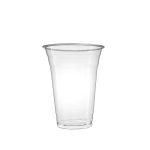As sustainability becomes a top priority for both businesses and consumers, PLA (Polylactic Acid) packaging is gaining serious attention. But many people still have questions about how it works, how to use it, and whether it’s truly eco-friendly.
In this guide, we answer the 12 most frequently asked questions about PLA packaging—from food safety and composting to design and product choices.
Whether you’re a café owner, food retailer, or eco-conscious shopper, this FAQ will clear up your confusion and help you make informed choices.
1. What Exactly Is PLA Packaging?
PLA (Polylactic Acid) is a type of bioplastic made from renewable plant sources like corn starch or sugarcane. It’s widely used for food packaging products like cups, lids, containers, and trays because it’s biodegradable and compostable under industrial conditions.
👉 Explore eco-friendly PLA cold drink cups and PLA cup lids from Xiamen Dashan.

2. Is PLA Food Packaging Safe?
Yes, PLA packaging meets global food safety standards including:
-
FDA (United States)
-
EU Food Contact Regulations
-
LFGB (Germany)
Products like PLA salad containers and dessert boxes are certified safe for direct food contact.
3. Can I Use PLA Packaging for Hot Food or Drinks?
PLA is ideal for cold or room-temperature foods. However, it starts softening at about 60°C (140°F), making it unsuitable for hot soups or coffee.
👉 For hot items, check out PP hot & cold drink cups from Xiamen Dashan.

4. How Should PLA Packaging Be Disposed Of?
PLA packaging must be sent to industrial composting facilities where high heat and humidity break it down properly. It doesn’t decompose in home composting or regular landfills.
5. How Long Does It Take for PLA to Decompose?
In industrial composting environments, PLA can break down within 90 to 180 days. In a landfill or natural environment, decomposition is much slower.
6. What Are the Main Environmental Benefits of PLA?
-
Made from renewable resources
-
Reduces CO₂ emissions by up to 75% compared to traditional plastics
-
Decreases dependence on fossil fuels
7. Is PLA Packaging Truly Biodegradable?
Yes, but only under industrial composting conditions with controlled temperature and moisture. It won’t biodegrade naturally in oceans or soil like paper.
8. Does PLA Packaging Look and Feel Like Regular Plastic?
Absolutely! PLA packaging has a similar appearance and feel to traditional plastics like PET, making it an easy switch for businesses that want to go green.
9. Can PLA Packaging Be Customized with Logos and Prints?
Yes! At Xiamen Dashan, we offer:
-
Custom printed PLA cups → View Products
You can achieve stylish, eye-catching packaging while staying sustainable.
10. Is PLA Packaging Cost-Effective?
While PLA can be slightly more expensive than traditional plastics, its eco-benefits, growing demand, and brand appeal make it a smart long-term investment—especially as plastic regulations tighten globally.
11. How Does PLA Compare to Other Packaging Materials Like PET or RPET?
| Feature | PLA | PET / RPET |
|---|---|---|
| Material Source | Corn/Sugarcane (renewable) | Petroleum / Recycled PET |
| Compostability | Yes (industrial) | No (Recyclable only) |
| Heat Resistance | Up to ~60°C | Up to ~90°C |
| Look & Feel | Crystal Clear | Crystal Clear |
| Best Use | Cold & Room-Temp Items | Wide Range |
12. Why Is Demand for PLA Packaging Growing So Fast?
With growing bans on single-use plastics and rising consumer demand for sustainable packaging, the global PLA packaging market is expected to grow over 13% annually through 2030.
✅ Need PLA Packaging for Your Business?
Xiamen Dashan offers a full line of PLA packaging solutions including:
We also provide custom designs, printing, and embossing services.
References:
-
European Bioplastics Association – Bioplastics Market Data
https://www.european-bioplastics.org/market/ -
NatureWorks – PLA Composting & Environmental Data
https://www.natureworksllc.com -
U.S. Food and Drug Administration – Food Contact Substance Notifications
https://www.fda.gov -
ScienceDirect – PLA vs PET Life Cycle Assessment
https://www.sciencedirect.com -
Ellen MacArthur Foundation – Plastics and Circular Economy
https://ellenmacarthurfoundation.org -
ResearchGate – Technical Properties of PLA in Packaging
https://www.researchgate.net -
Plastics Today – PLA Market Growth Forecast
https://www.plasticstoday.com -
U.S. Environmental Protection Agency – Composting Bioplastics
https://www.epa.gov - <p data-start=”8254″ data-end=”8330″ data-immersive-translate-walked=”e347da0b-56d7-4279-8736-cd33ca613
Disclaimer & Copyright Notice
This article is created by the Dashan Packing editorial and research team.All information presented here is for educational and industry reference purposes only.Some data and standards cited in this article are sourced from publicly available materials,official regulatory documents, or third-party publications, which are properly credited where applicable.
All rights to third-party trademarks, images, and content belong to their respective owners.If any copyrighted material has been used inadvertently, please contact us at angel@chndashan.com.We respect intellectual property rights and will promptly remove or revise any material upon verification.





